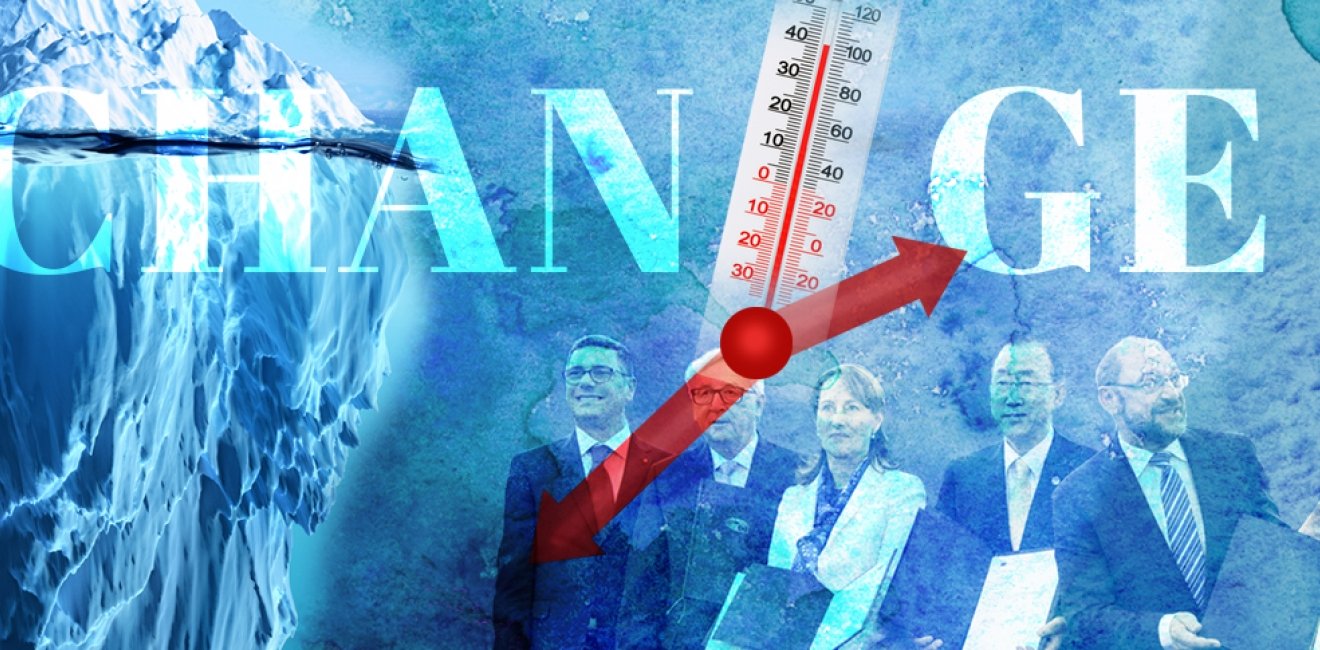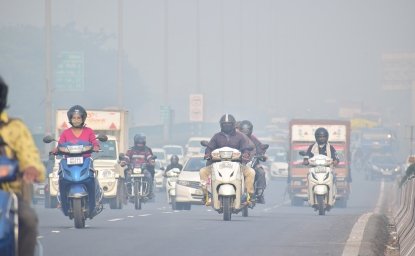Before turning to the Paris Agreement in particular, let me start with an admission. As a lawyer for the U.S. State Department for over thirty years (and the lead climate lawyer for over twenty-five), I was involved in negotiating many of the most significant multilateral environment agreements of the past few decades. But I have never been wild about the term “multilateralism.”
For one thing, I have found a lack of clarity when it comes to its meaning:
- To a lawyer, it’s confusing. When people talk about a “multilateral” approach, they might mean it in its literal sense (i.e., involving three or more parties), in its fullest sense (i.e., a global regime), or in a sense that is more political than legal (i.e., in contrast to “unilateralism” or “nationalism”).
- It is often not possible to motivate States to agree on a “multilateral” approach unless one State (or a small group of States) catalyzes such a solution by first acting unilaterally. When an international body reaches agreement, but was only able to do so because of a unilateral action, is that an example of multilateralism?
- An agreement might be “multilateral” in one respect but not necessarily in another. For example, a multilateral agreement might set an environmental standard but be silent on enforcement; if a State opts to enforce the standard through a trade measure, such as an import restriction, is that trade measure “multilateral” or “unilateral?” If a multilateral environmental agreement requires Parties to restrict trade with non-Parties, is the trade measure “multilateral” vis-à-vis the State that did not join?
- Even within the context of a global regime, there can be gradations of “multilateralism.” The international climate change regime is arguably at the extreme end of the spectrum; not only is there near-universal participation, but decisions are taken by consensus. However, a global agreement could operate in a different way. The Montreal Protocol, for example, is global in terms of its membership but can take decisions by less-than-global super-majority voting, in some cases binding all Parties.
Not only do I find the concept of “multilateralism” to lack clarity, but my experience leads me to believe that there is nothing magical or superior about a multilateral approach per se. Such an approach might have its advantages, serving the purposes of, for example:
- promoting environmental effectiveness, where action in many countries is necessary to address the environmental problem in question;
- reducing competitiveness concerns, which might have otherwise impeded action;
- addressing the interests of States affected by the environmental problem; and/or,
- enhancing the legitimacy of the regime.
However, those benefits might come at a cost. A multilateral approach might impede action—by slowing things down, by making it more difficult (or even impossible) to reach agreement, or by empowering reluctant participants. In some situations, unilateral, bilateral, or “mini-lateral” approaches might be more effective. In the case of addressing CO2 emissions from international aviation, for example, it took a unilateral act on the part of the European Union to prompt the development of an international approach. It is therefore hard to say, in a vacuum, whether “multilateralism” is the appropriate path and, even if so, exactly which form it should take.
For these reasons, I think it is useful to sidestep labels and focus instead on pragmatic problem-solving, i.e., identifying specific problems to be addressed and potential solutions to be considered. Below I consider problems and potential approaches to addressing them in the context of the international climate regime.

The Paris Agreement – A Good Foundation
I start from the premise that the 2015 Paris Agreement is a good foundation for international action and cooperation on climate change.
In part, I rest that premise on the history of the international climate change regime. It can be debated whether the international community’s initial choice, back in 1990, to take a UN-based global approach to climate change was a wise one or not. Securing agreement among nearly all countries in the world is always difficult; in the case of climate change, the challenges are compounded by the complexity of the issue, countries’ wildly different interests, and North-South politics. The UN Framework Convention on Climate Change (UNFCCC) was dogged by all of these challenges; moreover, the Parties were never able to agree to move away from consensus decision-making, essentially giving any one country the ability to block a decision.
It is no wonder that it took years of trial and error to elaborate the regime. The Parties needed to strike the right balance between stringency and participation, among other factors. Kyoto veered in the direction of stringency but sacrificed participation; it included emissions cuts that were legally binding and internationally negotiated but they did not apply to developing countries (even those with rapidly growing emissions), and the United States never joined. On the other hand, the Copenhagen Accord (as filled out by the Cancun agreements) achieved widespread participation, including both the United States and China, but was thoroughly non-binding and lacked rigor in terms of rules and guidelines. Against all odds, the Paris Agreement secured stringency in terms of both form and content, as well as global participation.
However, the Paris Agreement was not just a surprisingly good outcome in light of the climate regime’s difficult history; it is also a positive agreement on the merits, with the potential to deliver necessary ambition. Among other things:
- The Paris Agreement clearly sets forth the key climate objectives—limiting global temperature increase, enhancing resilience/adaptation to climate impacts, and making financial flows consistent with the other two objectives.
- Its architecture, which is both long-term and reliant on nationally determined contributions, allows Parties to focus their energies on implementation and increasing ambition, rather than continually having to negotiate new agreements/amendments/targets/etc.
- It creates an ambition cycle, with regular global assessments and updates of national action.
- It provides for robust reporting and review of both emissions and implementation.
- It finds the sweet spot between national discretion and international rules, accommodating a wide array of different national circumstances within the context of various global goals and requirements.
- The goals of the Paris Agreement are floors, not ceilings. Nothing in the Agreement prevents the Parties, or groups of Parties, from aiming higher (such as for a temperature goal of 1.5°C, rather than “well below 2,” or for net zero emissions by 2050, as opposed to the second half of the century). That is already happening.
- Finally, it breaks new ground in recognizing and encouraging the contributions of non-State actors.
As the ad for Prego spaghetti sauce used to say, “it's in there.”
Criticisms of the Paris Agreement
Some of the criticisms of Paris are based on misimpressions. For example, it is sometimes said that the Agreement is a failure because the NDCs put the world on track to warm by three or more degrees Celsius. That would be a valid criticism if the Agreement stopped with one set of NDCs. But the initial NDCs were never designed to fully achieve the Agreement’s temperature goal. Rather, they were intended to guide the early years and then be replaced by more ambitious NDCs in subsequent years. The Agreement has an indefinite time-frame, with regular global assessments and NDC updates along the way.
Other critiques, for example, that countries have not been doing enough under the Agreement to tackle climate change, say more about the nature of the climate beast—and the insufficient political will to address it—than about the Agreement itself. Moreover, two unanticipated events since Paris have further affected enthusiasm for climate action: the U.S. withdrawal from Paris has likely eroded political will, at least in some countries, and the arrival of a pandemic in 2020 has, at a minimum, diverted political attention.
Criticisms that the Agreement would be stronger if the targets were negotiated, legally binding, and enforceable, do not address whether a “stronger” agreement, at least on paper, would have been more effective in real life. Even assuming for the sake of argument that such a design could have been agreed to, would it have had a positive or negative effect on participation (including that of the United States and China), the level of ambition, and actual implementation?
But More Needs to Be Done…
That said, much more needs to be done to effectively grapple with the enormity of the climate challenge. The international community is currently not doing enough to address climate change, whether by reducing greenhouse gas emissions, adapting to impacts, or otherwise. Per the IPCC and other sources, we are not nearly on track to keep the world at a safe temperature—one that does not involve devastating impacts and upend life as we know it; even at a “safe” temperature, there would be significant negative impacts.
If we are to avoid the worst consequences of climate change, we need to act with sufficient vigor and speed to effectuate a massive transition from fossil to non-fossil energy and the large-scale removal of carbon from the atmosphere.

Five Steps Towards Achieving the Paris Objectives
I would suggest five things that need to happen to move us closer toward achievement of the Paris objectives—some inside Paris proper and some outside, in the “greater metropolitan” area. COVID-19 injects huge “known unknowns” into the mix, and others might equally pick five different items for their agenda, but here is my multi-forum, multi-actor list.
1. NDCs – It Takes a Village
The “nationally determined contribution” (NDC) is the backbone of the Paris Agreement. This design feature of the Agreement, which relies on the Parties to set and update their emissions contributions rather than specifically directing them to do X or not do Y, depends upon the Parties’ political will to deliver adequate reductions over time. There is nothing automatic about it.
For the NDCs to be successful, help will need to take many forms, from many sources:
- High-level political attention (such as that provided by the UN Secretary General, the G7, and the G20) is needed to help keep Parties focused on the importance of NDC implementation and enhancement.
- Financial and technical assistance (such as through the Green Climate Fund and the NDC Partnership) is needed to help some developing countries with the implementation of their NDCs.
- Pressure from civil society is needed to help keep climate action on the front burner, as well as push for stronger commitments.
- Action by sub-national governments and other non-State actors is needed to contribute to NDC implementation, as well as provide confidence to Parties to raise their ambition.
- Should the United States return to Paris in the short term, its leadership and other tools will be needed to promote global NDC implementation and improvement.
Admittedly, the atmosphere doesn’t care whether emissions are reduced pursuant to an NDC or otherwise. However, NDCs are the currency of the Paris Agreement, and it is important for the viability of the regime to ensure that a significant amount of climate action is captured in this form.
2. Specific Initiatives – Getting to Net Zero
In the few years since 2015, when the Paris Agreement was adopted, conventional wisdom has shifted in the direction of the need for both a stronger limit on global temperature increase (1.5o C., rather than well below 2) and a nearer-term goal for net zero emissions (2050, rather than the second half of the century). As such, there needs to be greater emphasis on initiatives focusing on specific decarbonization objectives (whether related to reducing emissions, increasing removals, or both) among smaller sets of actors.
- In terms of “who,” there could be a role for sub-sets of Parties (i.e., national governments) and/or multi-stakeholder initiatives involving sub-national governments, companies, etc.
- In terms of “what,” efforts could involve, for example, sectoral cooperation (e.g., cement) and/or a specific objective (e.g., related to the internal combustion engine).
- In terms of “where,” efforts could take place in a forum outside the UNFCCC/Paris Agreement, such as in a revived U.S.-led process involving the world’s major economies, or the G20. Instead or in addition, they could be rooted somehow in the UNFCCC/Paris; at a minimum, outside cooperative arrangements could potentially be fed back into the Paris regime, e.g., as part of the regular global stocktake.
- In terms of “how,” to the extent that "agreement" is reached on any particular subject, initiatives might result in a non-binding outcome, a binding agreement, or other arrangements; in some cases, there may just be cooperation without a particular written outcome.
3. The Conference of the Parties (COP) – In Need of Re-Imagining
Even before COVID-19, it was a good time to review and rethink the “COP,” the annual UNFCCC climate change conference.
The COP has historically revolved around intergovernmental negotiations, with success measured (rightly or wrongly) by the extent to which the Parties to the UN Framework Convention or the Paris Agreement are able to reach agreement. However, things are changing:
- With the Paris Agreement in force, the Paris design based on non-negotiated mitigation contributions, and the “rulebook” nearly completed, future COPs will involve much less negotiation.
- There is a growing disconnect between the demand for climate action and what the official COP has been able to deliver.
- Non-State entities have become more significant as climate actors, not just in the United States (where they work to uphold the Paris goals in the face of withdrawal) but all over the world. They are not only taking extensive action but also discussing and debating emerging issues and approaches (such as carbon dioxide removal) in ways that the COP is not. At the recent Madrid COP, there were times when the so-called “side events” seemed like the main event, and the official proceedings seemed like the side event.
The COP’s role as an action-forcing event is too important to alter its annual frequency. But it is time for the COP to adapt. As just two examples:
- A more effective COP would put greater emphasis on, and energy into, practical implementation than on agreed COP pronouncements. For example, a session on unpacking the issues involved in developing a national strategy to decarbonize the economy by the middle of the century could be more useful than chasing a consensus sentence on such strategies (which is likely to be least-common-denominator and without real-life impact).
- A COP should aim to reduce the gap between the official universe (the Parties) and the unofficial universe (the non-State actors). The UNFCCC regime is already far ahead of others in terms of supporting and engaging so-called “non-Party stakeholders.” More could be done, however, to combine the worlds, such as through platforms for multi-stakeholder initiatives, greater ease of access for states, cities, etc.
Of course, COPs cannot be expected to evolve effectively unless there is also an evolution in the metrics used to judge them. For example, if COP watchers treat implementation as dull and focus unduly on the presence or absence of particular words in an official outcome, reform will be more difficult. At the same time, unless COPs can change to fit the new realities (and COVID-19 has added extra challenges to staging a large conference, to be sure), they risk losing force and relevance.
4. The Importance of Other Fora – It’s Your Problem Too
The Paris Agreement cannot fully advance its objectives without the help of other international agreements and institutions. As noted above, certain fora will need to lend political, technical, and/or financial support to the implementation and enhancement of NDCs. But others also need to step up, as the Montreal Protocol on Substances that Deplete the Ozone Layer did when it adopted the 2016 Kigali Amendment to regulate the production and consumption of hydrofluorocarbons (HFCs).
In some cases, other fora may be appropriate because an issue demands specialized expertise. For example, the Paris Agreement calls for strengthened cooperative action on technology development and transfer. However, no one would expect an agreement to reduce or eliminate tariffs on climate-friendly goods to be negotiated under Paris auspices.
In other cases, the UNFCCC regime has designated particular fora to address greenhouse gas emissions. In this regard, emissions from international bunker fuels are addressed by the International Civil Aviation Organization (ICAO) and the International Maritime Organization (IMO), respectively. ICAO has adopted a global market-based mechanism to offset international aviation emissions; more needs to be done in the IMO, which has so far adopted only an initial GHG strategy.
In addition, climate impacts are bound to have a material effect on other fields. Certain climate impacts relate to environmental fields, such as biodiversity, fisheries, and protection of the marine environment, and should be taken up by fora addressing those issues. Other impacts, such as sea level rise, have implications for, e.g., the law of the sea and migration.
Finally, in some cases, the issue is less about taking climate action than about not impeding climate action. If the Paris Agreement works as intended, Parties will be assuming increasingly ambitious targets over time. At least some of the national measures taken to achieve them are likely to be challenged under other regimes that regulate trade and/or investment (such as the WTO). There may be ways for such fora to make an affirmative contribution to the climate effort, such as through fossil fuel subsidy reform. However, at a minimum, they should consider how best to ensure that their regimes do not stand in the way of bona fide climate action.
5. Climate = Foreign Policy
To date, climate change has been largely addressed alongside foreign policy, rather than as part of it. In the United States, even under the climate-friendly Obama Administration, and with international climate negotiations embedded in the State Department rather than another agency, climate issues were not mainstreamed into the day-to-day business of the department.
However, to the extent that efforts in the above realms are to be successful, many will depend, at least in part, on convincing officials and other actors in “traditional” foreign policy spaces of the need to integrate climate change into their worlds. There needs to be a broad national commitment to the issue. Climate change has too many sources, on the one hand, and implications, on the other, to be either ignored or treated as a niche issue with little or no bearing on other fields.
This needs to change. Steps such as these could help:
- Lead by example: Those in leadership positions should make clear to policymakers that the days of giving short shrift to climate considerations are over. There needs to be institutional recognition of the many ways in which actions taken in certain fields (e.g., trade, aviation, shipping, agriculture) can help reduce climate change and how certain other fields (e.g., migration, law of the sea, food security, conflict) are potentially affected by climate impacts.
- Educate: Governments should explore ways to integrate climate literacy into standard diplomatic training and continuing education.
- Cut the jargon: Climate specialists, especially those involved in the international negotiations/regime, need to do a better job of speaking in a language that non-specialists can understand. Partly because the regime is complicated, and partly because particular words have taken on outsized significance in the negotiating process, climate negotiators (myself included) tend to speak in code. We need to make the climate regime more accessible.
- Institutionalize through structure and personnel: Governments should organize themselves so as to better integrate climate change with traditional foreign policy issues. This could involve not only how they set up their bureaucratic structures (e.g., including international climate issues within the ministry of foreign affairs) but how they select and assign personnel.
Conclusion
In sum, we have the right foundation—it’s the Paris Agreement. Like any foundation, it needs additional layers or, to pick up the city metaphor, additional structures both within Paris proper and within its surrounding areas. These need to include ever-improving NDCs from Parties, heightened commitments from smaller coalitions, ambitious action from non-State actors, help from other international agreements, and integration of climate issues across the foreign policy landscape. The international community may or may not succeed in avoiding the worst climate impacts; if it fails to do so, however, it will not be a function of the Paris Agreement but rather of a lack of political will that no agreement alone, whatever its design, could overcome.

Author

Environmental Change and Security Program
The Environmental Change and Security Program (ECSP) explores the connections between environmental change, health, and population dynamics and their links to conflict, human insecurity, and foreign policy. Read more







